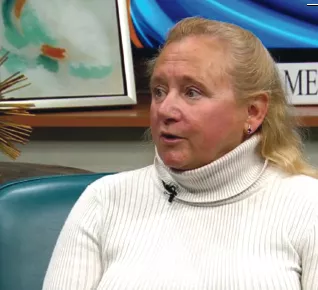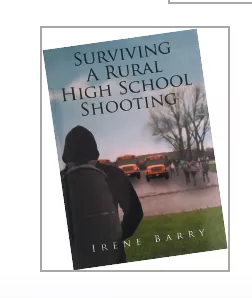
In 2017, at least 66 incidents of gunfire occurred nationwide on school grounds, often resulting in injury or death. Aztec High School in Aztec, N.M., was one of the schools.
On December 7, as reported on KREZ 13 and KOB 4 Television, William Atchison, age 21, disguised himself as a student to gain entry into the school. He was discovered hiding in a second-floor bathroom, when he opened fire on Francisco Fernandez, a student, killing him. Atchinson then shot Casey Marquez, another student, in the hallway, before fatally shooting himself. Irene Barry, a classroom English teacher and department chair—she was also a golf coach—was there that day.
Barry turned her experience into a book, Surviving a Rural High School Shooting, in an effort to show all teachers—in settings rural and not—what can happen when a mass shooting strikes, and to help educators prepare. In this excerpt, Barry writes:
“At 8:07 a.m., the loudspeaker said lockdown, and as I closed my door, I heard the vice principal saying downstairs that we had an active shooter. The students were alarmed, and I told them to remain calm and get into my closet. I could not hear any shots being fired for we were on the [opposite] side of campus...I made sure my door was locked and had a student help me tape up the window on the door with golf shirts. I told the students to remain calm and that they were in good hands. I had been through active shooter training and knew what to expect.”
Lessons Learned
While Barry’s book, Surviving a Rural High School Shooting, helps educators understand how community resources respond, it also underscores how educators can be better prepared. Barry’s insights include:
- All teachers, staff, and administrators need to go through active shooter training because you never know when this could happen to you.
- When assessing an active shooting situation, consider whether you or the children are in imminent danger or out of harm’s way. Keep student backpacks and purses in the class- room as you are being evacuated.
- Prepare students for what is about to happen to them—such as being searched three times before boarding the buses and explain that the process is sheriff protocol for emergency evacuations.
- Once they’ve been removed from the situation, try to keep students relaxed. Explain that they shouldn’t accept as truth information they may gather from social media, since no one knows what has hap- pened yet.
- Make sure there is a website established for reporting roll call from faculty so the radios do not get tied up during the emergency.
- Make sure you are prepared in case this happens to you.



